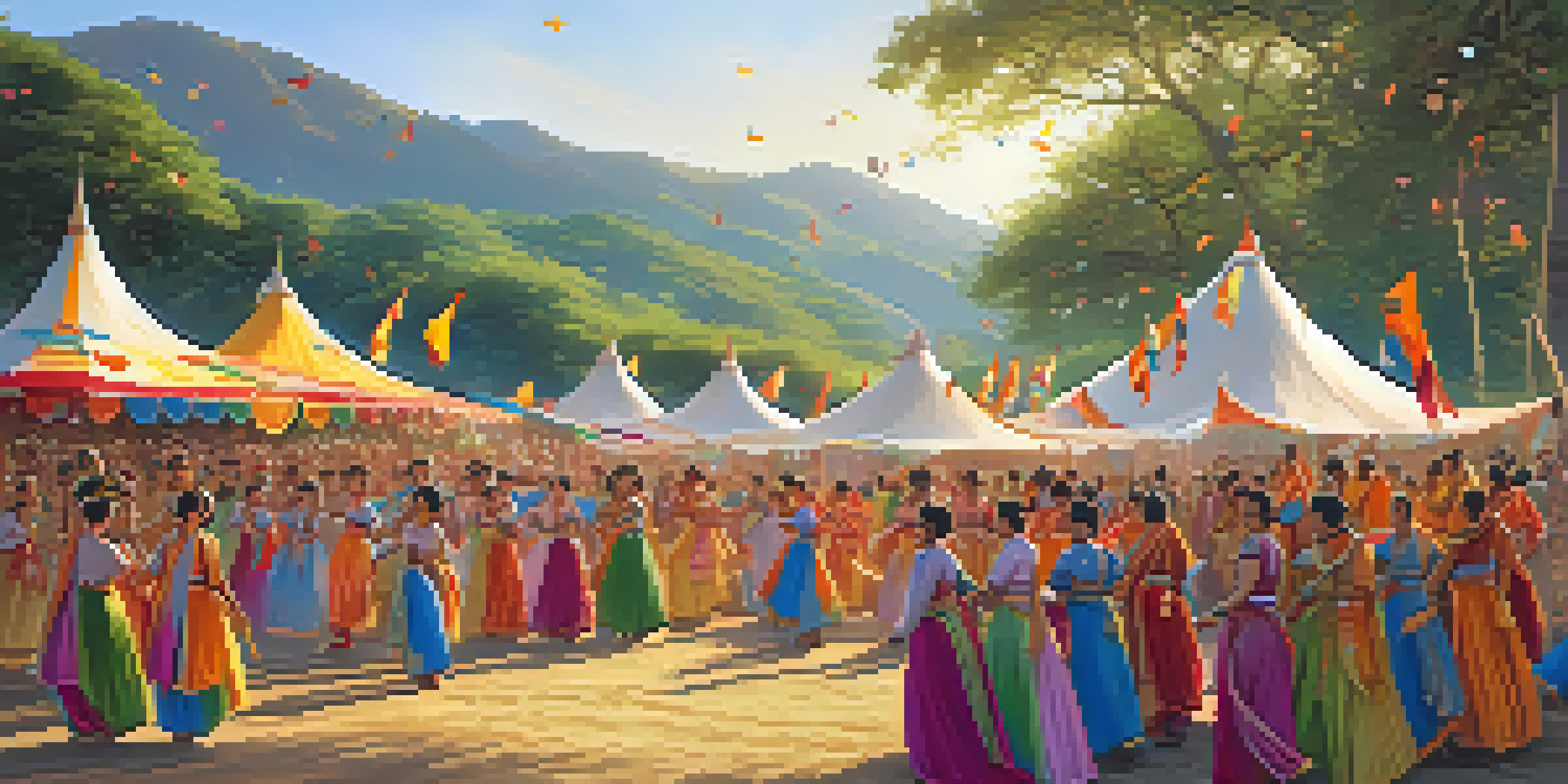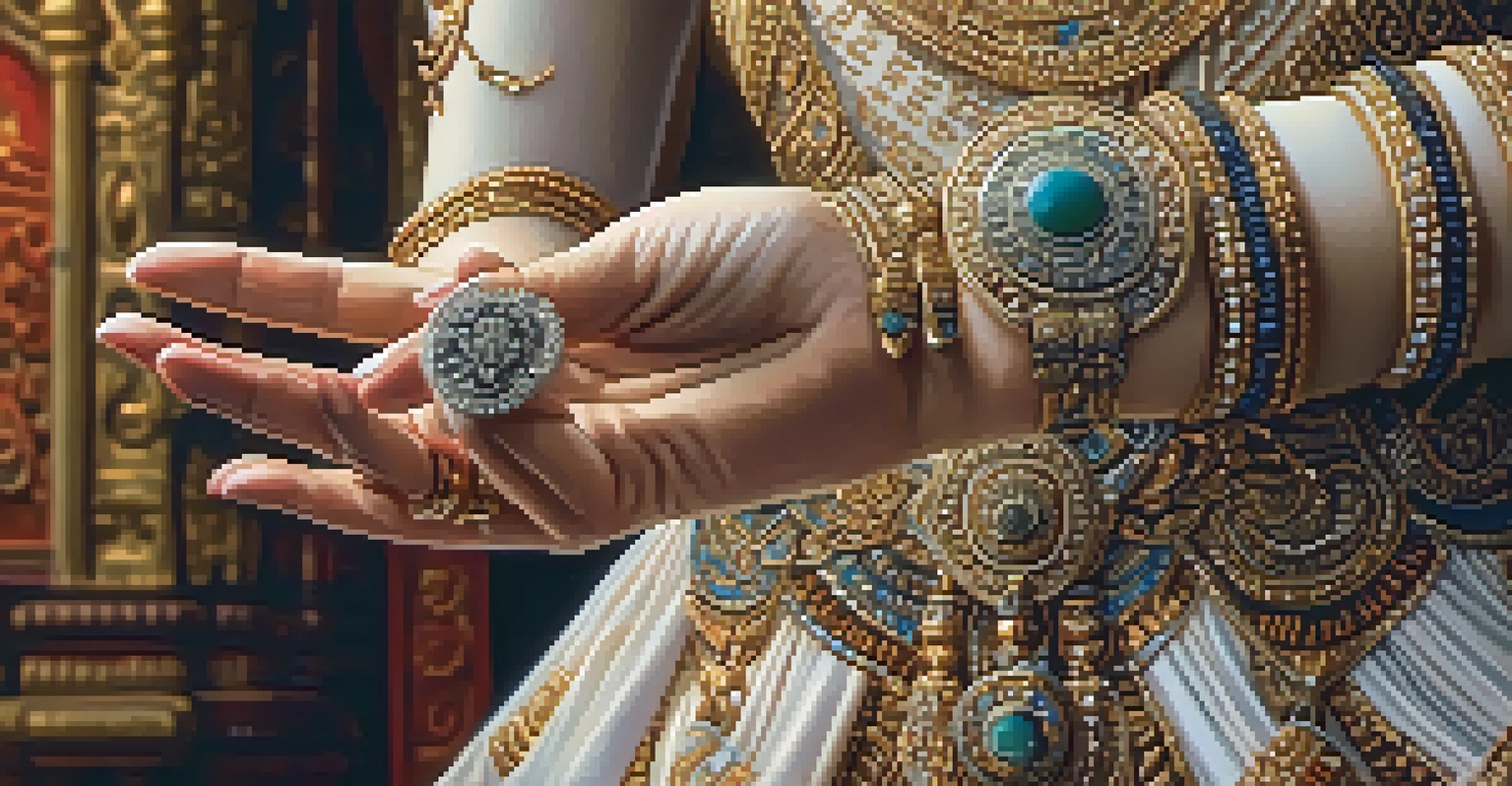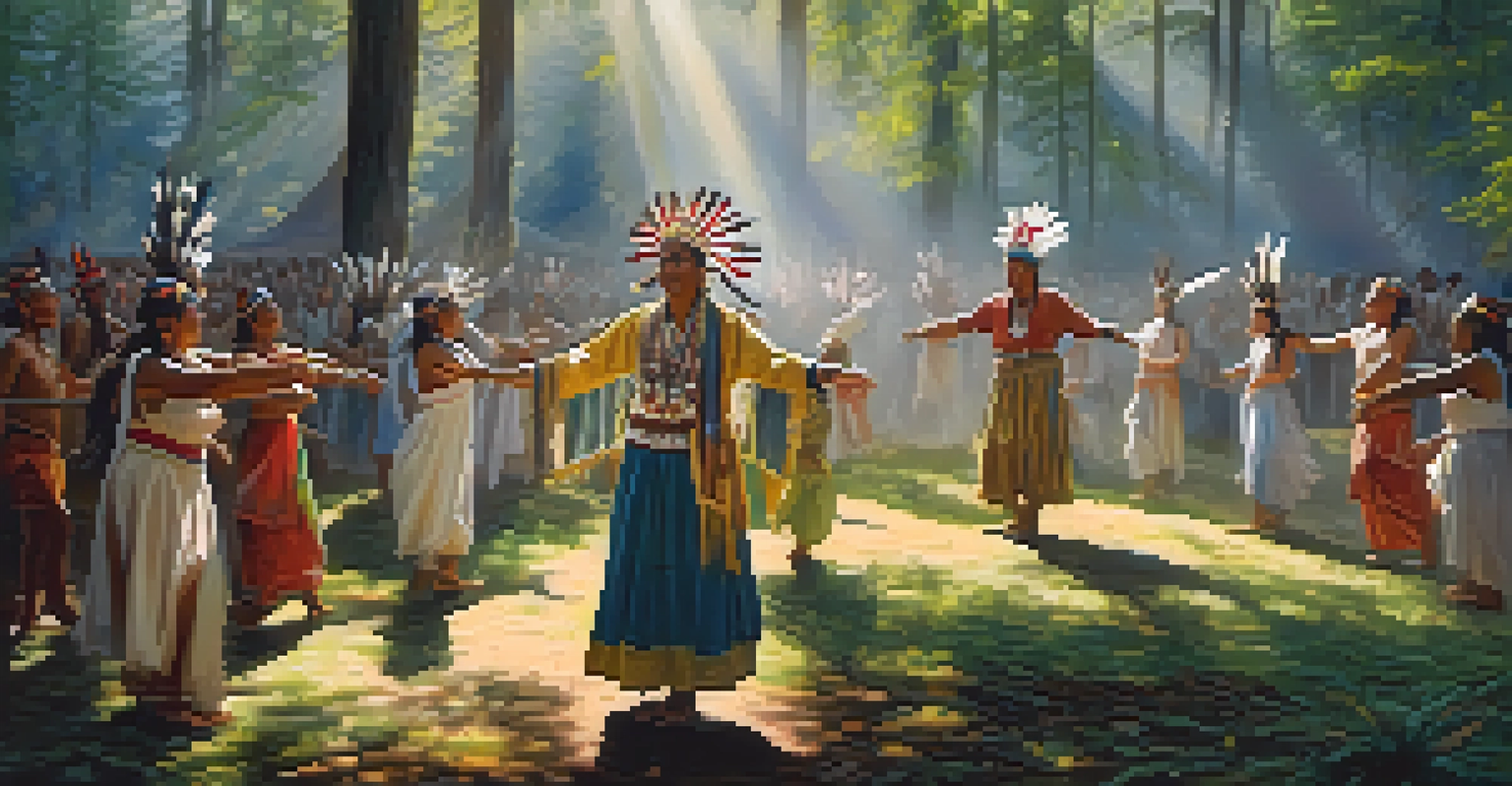Rituals and Celebrations: Dance in Ancient Civilizations

The Role of Dance in Religious Rituals
In many ancient civilizations, dance served as an essential element of religious rituals. It was a way for communities to connect with their deities and express their beliefs. Often, these dances were performed during ceremonies to mark significant events such as harvests, births, or funerals, showcasing a deep respect for the spiritual world.
Dance is the hidden language of the soul.
For instance, in ancient Egypt, dancers would perform during temple rituals to honor gods like Osiris and Isis. These performances were not just entertainment; they were considered offerings, believed to please the gods and ensure favor in daily life. The movements and rhythms were steeped in symbolism, creating a rich tapestry of meaning behind every gesture.
Related Resource
Moreover, the communal aspect of these dances helped strengthen social bonds within the community. People came together, united by shared beliefs and the collective experience, creating a sense of belonging that transcended individual differences.
Celebratory Dances in Ancient Festivals
Festivals in ancient societies were often vibrant occasions filled with music, food, and, of course, dance. These celebrations marked important seasonal changes or historical events, allowing communities to come together in joy and gratitude. Dance was a primary means of expressing this collective happiness, embodying the spirit of the occasion.

Take the ancient Greeks, for example. Their festivals, such as the Dionysia, featured theatrical performances intertwined with lively dances that honored the god of wine and revelry. Participants would dress in elaborate costumes and engage in choreographed movements, creating a spectacle that captivated audiences and honored their traditions.
Dance Connects Communities Spiritually
In ancient civilizations, dance served as a vital link to spirituality, enhancing communal bonds and honoring deities during significant rituals.
These celebratory dances also served as a form of storytelling, passing down cultural narratives from generation to generation. Through rhythm and movement, ancient peoples could convey their histories, myths, and values, ensuring that their heritage was preserved in an engaging and memorable way.
Dance as a Means of Healing and Protection
In various ancient cultures, dance was not only a form of celebration but also a powerful tool for healing and protection. Ritual dances were often performed to ward off illnesses or misfortunes, with the belief that movement could channel spiritual energy to bring about positive change. This intertwining of dance and health highlights the multifaceted role it played in society.
Dance is the joy of movement and the heart of life.
For example, in some Native American tribes, healing dances were integral to shamanistic practices. The shaman would lead the community in rhythmic movements and chants, aiming to restore balance and harmony in individuals and the tribe as a whole. This sacred practice illustrated the deep connection between body, mind, and spirit.
Related Resource
Similarly, in ancient African cultures, dance was often part of rites aimed at invoking protection from ancestral spirits. The movements and rhythms were thought to attract positive energies, reinforcing a sense of security within the community. These practices underscore the belief that dance transcends mere entertainment, serving as a vital conduit for spiritual well-being.
The Symbolism of Dance Movements
Dance movements in ancient rituals were rarely arbitrary; each gesture often carried significant symbolism. From the way a dancer moved their arms to the patterns created on the ground, every action was imbued with meaning. Understanding this symbolism provides deeper insights into the culture and beliefs of the civilization.
In the context of Indian classical dance forms, for instance, every hand gesture, known as 'mudras,' conveys specific emotions or ideas. These intricate movements allow dancers to narrate stories, conveying profound philosophical concepts through their art. This aspect of dance as a language emphasizes its role in communication beyond words.
Dance Reflects Social Structures
Dance often mirrored social hierarchies, with certain forms reserved for the elite while folk dances allowed lower classes to express their identity.
Furthermore, the patterns and formations created by dancers during rituals often reflected the natural world. By mimicking the movements of animals or the flow of water, ancient societies established a connection with their environment, showcasing a profound respect for nature. This connection illustrates how dance can unify human experience with the broader universe.
The Influence of Dance on Social Hierarchies
In many ancient civilizations, dance was not just a communal activity; it often reflected and reinforced social hierarchies. Certain dances were reserved for the elite, while others were open to all, demonstrating the complex interplay between art and social structure. These distinctions played a crucial role in the cultural fabric of these societies.
For example, in ancient Rome, elaborate dances were part of public spectacles and celebrations, often featuring trained performers from the upper classes. These events were spectacles that showcased wealth and power, creating a clear divide between social classes. The performances were not merely for entertainment; they reinforced the social order and the status of those who participated.
Related Resource
Conversely, folk dances served as a means for the lower classes to express their identity and unity. These dances, often characterized by simpler movements and community participation, allowed individuals to celebrate their heritage and resist social constraints. This dynamic illustrates how dance can both uphold and challenge societal norms.
The Evolution of Dance in Ancient Civilizations
As civilizations evolved, so too did their dance forms and the contexts in which they were performed. Each era brought new influences, styles, and meanings to dance, reflecting the changing beliefs, values, and experiences of the people. This evolution highlights the adaptability and resilience of dance as a cultural expression.
For instance, during the Renaissance, European dance underwent significant transformation, influenced by social changes and artistic movements. Court dances became more formalized, with an emphasis on grace and technique, reflecting the ideals of the time. This shift not only changed how dance was perceived but also who participated in it, paving the way for future dance forms.
Ancient Dance Influences Modern Culture
The legacy of ancient dance traditions continues to enrich contemporary performances, highlighting the universal appeal of rhythm and cultural storytelling.
Meanwhile, in regions like Africa and the Americas, traditional dances evolved in response to colonization and cultural exchange. Despite external pressures, these communities adapted their dances to preserve their identities, often blending traditional elements with new influences. This adaptability of dance underscores its importance as a living cultural practice that continues to evolve.
The Legacy of Ancient Dance in Modern Culture
The impact of ancient dance traditions can still be felt in modern culture, as many contemporary dance forms draw inspiration from their historical roots. This legacy not only enriches today’s artistic expressions but also serves as a reminder of the shared human experience across time and space. Understanding these connections fosters a deeper appreciation for the art of dance.
For example, many modern theatrical performances integrate elements from ancient dances, whether through choreography, music, or thematic content. This blending of old and new highlights how dance continues to be a vital means of storytelling and cultural expression, bridging generational gaps and preserving heritage.

Additionally, traditional dance forms from various cultures are experiencing a resurgence, as communities seek to reconnect with their roots. Festivals celebrating these dances attract audiences worldwide, emphasizing the universal appeal of rhythm and movement. This revival illustrates the enduring power of dance to unite people and celebrate cultural diversity.